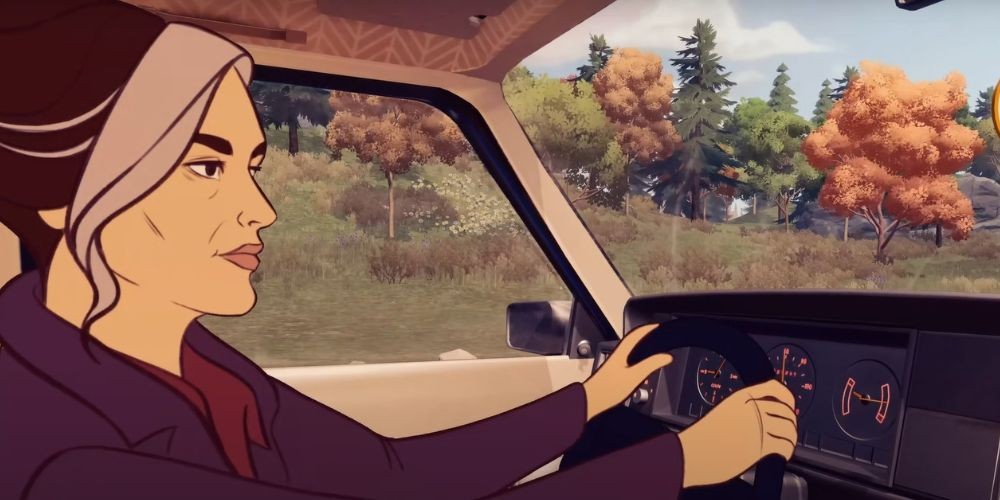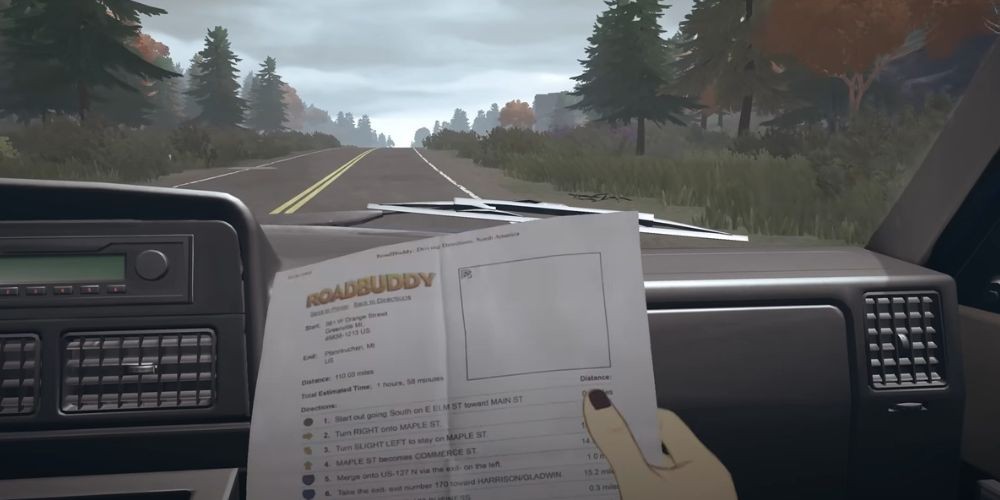Winding Paths and Missed Turns: A Journey Half-Traveled in Open Roads
Jul-19-2024

I once read in a very profound article published in a very prestigious magazine (okay, it was a TikTok) that "daddy issues" make artists while "mommy issues" make writers. I can't attest to the science--or lack thereof--behind this statement, but as a writer born into a long line of guarded women who wielded pens as weapons, I can absolutely relate. As such, I have a particular fondness for mother-daughter stories and the catharsis they can offer. When I heard the team behind Gone Home would be tackling the subject in their upcoming game *Open Roads*, I braced for a beautiful cross-country journey that would inevitably hit too close to home.
However, while Open Roads has moments of relatability that are powered by solid dialogue, charming characters, and nostalgia, I was ultimately left underwhelmed by the walk-and-click exploration game. With a runtime too short to truly pull players in and an abrupt ending that leaves things feeling hastily resolved, Open Roads feels more like a pit stop than an adventure.
The Premise of Open Roads

The story kicks off shortly after the passing of the Devine family matriarch, Helen. Her daughter Opal and granddaughter Tess are left navigating a world of grief and uncertainty. Tess, a 16-year-old high school student, and her mother find themselves in a transitional phase. Helen's death coincides with Tess's parents' separation, and the subsequent loss of their home, as they lived with Helen but weren't left the house in her will. During the emotionally laden task of cleaning out their grandmother's home, Tess and Opal discover a suitcase buried in the attic, containing evidence of Helen's secret life and a passionate love affair. With time to spare before the house is sold, they embark on short trips to uncover the mysteries surrounding Helen's life.
Gameplay Mechanics and Exploration
In Open Roads, players assume the role of Tess. The gameplay involves walking through various locations, interacting with period-specific objects, and occasionally pocketing items to solve light puzzles. The environments are laden with nostalgic items from the '60s to the early 2000s, designed to evoke memories particularly for American millennials. Tess can call her mom to offer context or discuss findings, adding dimensions to their relationship. However, the gameplay becomes repetitive, as the primary mechanics lack variation and intensity.
On the Road Again, Sort Of
A prominent theme in Open Roads is the road trip. However, the irony lies in how little time players actually spend on the road. Tess sits in the passenger seat of her mom's late-'90s sedan, sifting through static-filled radio stations, texting her father or best friend, and chatting with her mom. Despite the game's title, these on-road experiences are brief and fail to create a true road-trip atmosphere, missing chances to refresh the gameplay.

The Strength of Characters
Kaitlyn Dever and Keri Russell breathe life into Tess and Opal, making them endearing despite the game's shortcomings. Helen, though never heard and only seen in grainy photos, exudes personality through their conversations. The characters' depth and charm are undeniable, but the game falls short in fully exploring these relationships. The mother-daughter dynamic lacks the tension one might expect, given the layers of grief, divorce, and betrayal in the storyline.
Missed Opportunities for Emotional Depth
Open Roads hints at meaningful conversations about generational trauma, maternal complexity, and miscommunicated love but doesn't fully dive into these areas. The game's brevity and hesitation to explore messier, more human emotions create a barrier between the player and the story. As a result, while the characters are likable, there's an absence of deep emotional connection. Even with numerous pivotal moments unraveling around them, the game’s most impactful conversation is surprisingly trivial--an argument about returning to the hotel for a forgotten phone.
The Visual and Auditory Experience

One of the game's standout features is its detailed environments. The developers' pedigree in exploration games like Gone Home and Tacoma is evident. Each setting brims with nostalgic elements that anchor players in a specific time and place without overwhelming them. These visual details often carry more emotional weight than the dialogue. The character art, inspired by animated films from the '90s, juxtaposes the realistic environments and aligns well with the excellent voice acting, although the lack of proper lip-syncing and incomplete sound design detracts from the immersion. The anticipated period-specific music and sounds were notably absent, leaving the auditory experience feeling sparse and incomplete.
The Final Verdict
Although Open Roads has much to admire in terms of narrative ambition, dialogues, and character structure, it stumbles in execution. The plot is intriguing, and the heart behind the story is evident, but everything feels prematurely cut off or inadequately developed. The mother-daughter journey lacks the anticipated depth and transformation. While the game attempts to offer a meaningful examination of their relationship, the experience feels more superficial than profound. As a result, Open Roads leaves players with a sense of what could have been rather than what is.
Despite these shortfalls, Open Roads remains a testament to the developers' storytelling hopes and talent in creating atmospheric settings. There’s substantial promise, but it falls frustratingly short, making the experience feel less like a transformative trip and more like a brief excursion that doesn't wander far from home.







